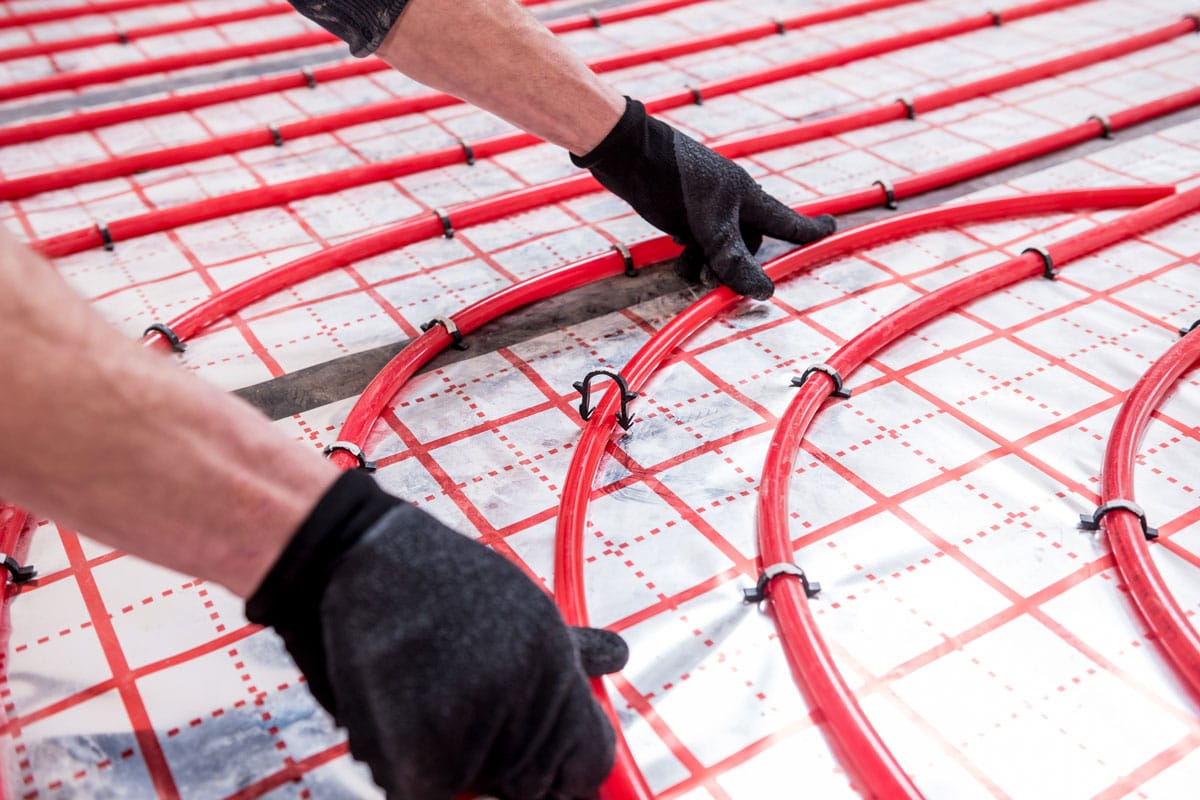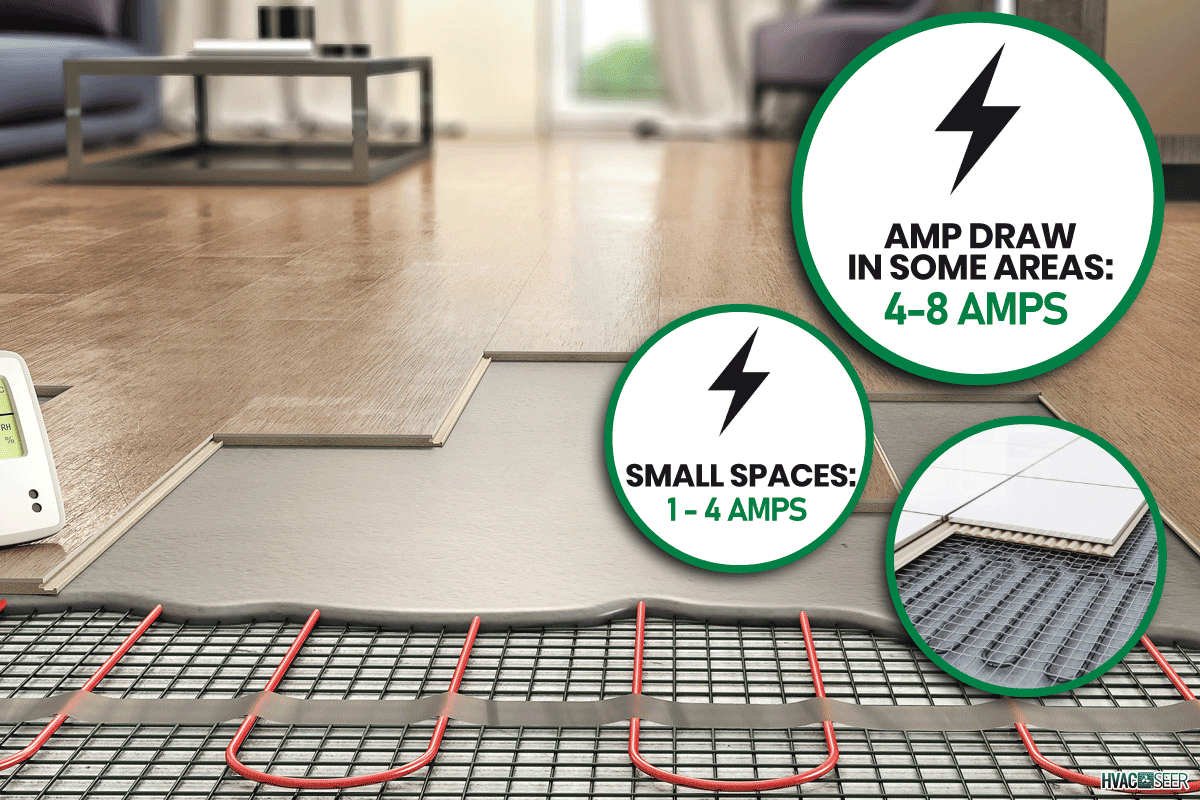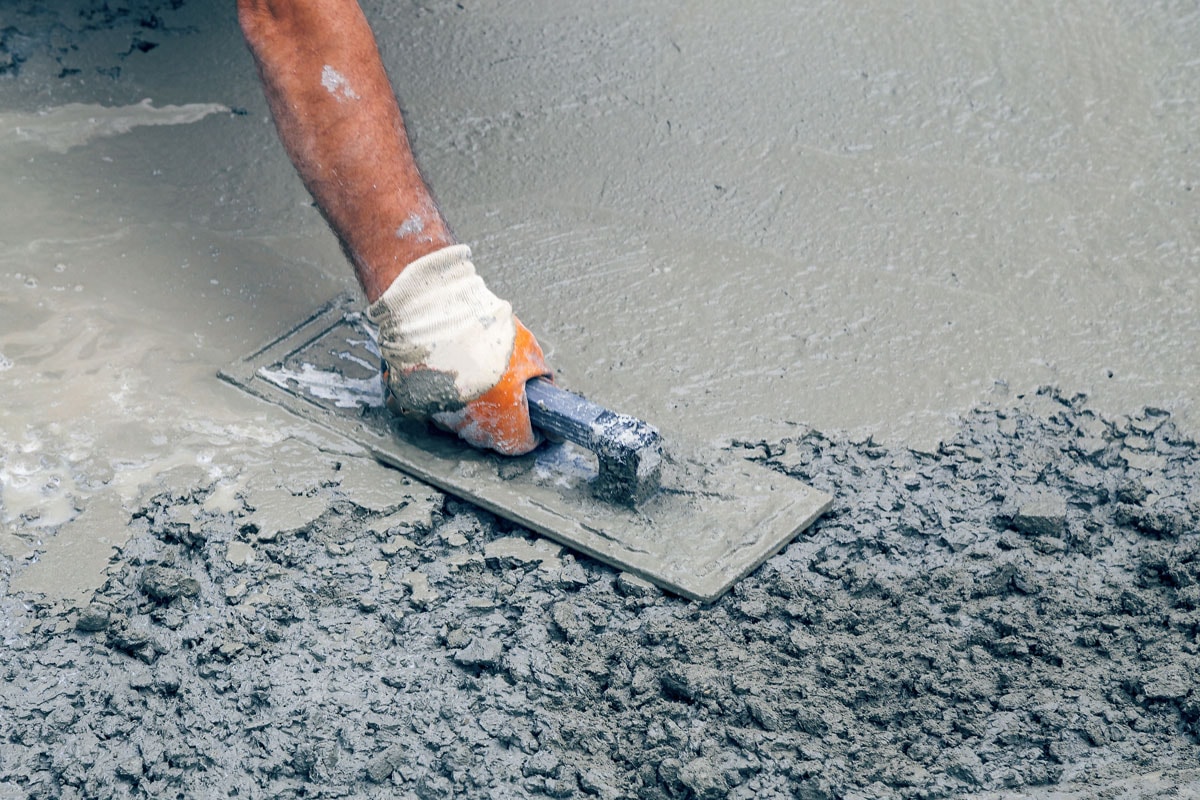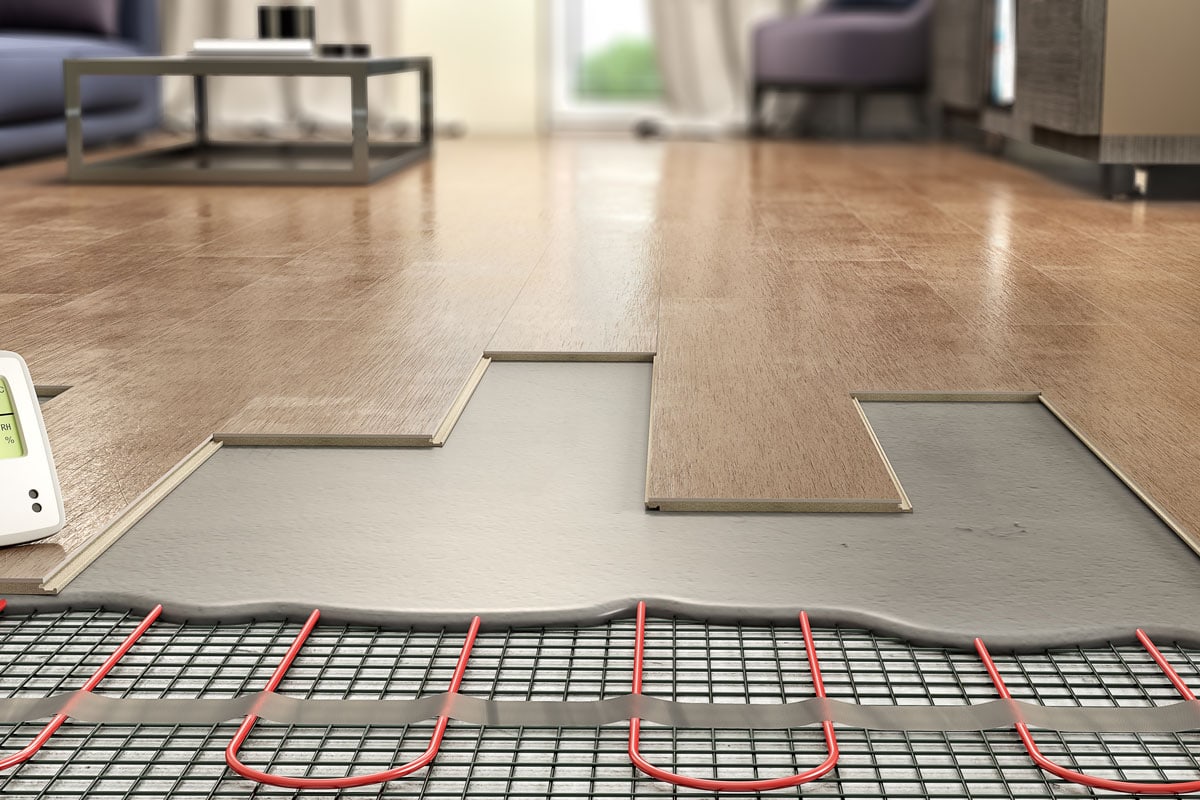As a homeowner, you may wonder what size cable you need for underfloor heating. Luckily, we have researched this topic for you, and here is what we found.
The type of thermostat you have and the square footage of the area you'll be heating will determine the size of cable used for your underfloor heating system. You should choose a cable that is suitable for your net area.
Choosing the right cable size for underfloor heating is not as difficult as it seems. Keep reading to get detailed information about underfloor heating systems and cable sizes.
What Size Cable Do I Need For Underfloor Heating?

When fixing an underfloor heating system, it is crucial to purchase the appropriate cable size for the work. Doing this saves you both time and money during the installation.
Different types of cables are used for underfloor heating, and each comes in various sizes. In most cases, the size of the room and the thermostat you have will determine the type of cable you should go for.
You can try sketching the proportions of the gross area before installing the underfloor heating system. You will need to select a heating mat or cable that is suitable for the net area. To do this, measure the dimensions of your net area.
For a net area of 36 1/2 square feet, you need to select a heating cable that is sufficient for an area of 32 square feet. A cable of a different size may not fit.
You should also take note of anything that's installed and takes up floor space, like toilets and bathtubs, since you won't need to heat the floor directly below them.
Your sketch should be carefully marked with these fixtures and their sizes. The area that is left after that is effectively the net area that can be heated with underfloor heating.
You can get an accurate measurement of the net area that needs to be heated by taking the gross area and then subtracting the dimensions of the fixed items from that number.
How Does An Underfloor Heating System Work?
There are various types of underfloor heating systems, the most common of which are electric and water-based. The operation of the heat is determined by the type of underfloor heating system installed.
The basic idea behind water-based heating systems is not complicated. Pipes are laid in the floor, and warm water circulates through them to heat the floor effectively.
Since the floor is significantly larger, it only needs to maintain a temperature a few degrees higher than the air temperature to offer the needed warmth to gently heat an entire room.
Pipe loops are typically laid out beneath the entire floor. These loops are linked to a centralized underfloor heating manifold. It then receives hot water from a heat source.
On the other hand, an electric underfloor heating system heats an area through the use of thin heating wire beneath the surface of your floor. This wire emits heat into the room.
When the power is turned on, the wires generate heat, which then radiates upward through the floor to warm the room. As a result, the floor will feel warm when you walk on it.
Regardless of the type of underfloor heating system, the primary goal of the system is to provide a similar source temperature across all the floor areas in the building so there will be a consistent level of comfort throughout the structure.
Click here to view this heating cable on Amazon
Can You Extend Underfloor Heating Cable?

If you notice that the floor probe or the underfloor heating cables are not long enough when the system is installed, you can extend them. However, this modification should only be made by a professional.
If you want to do it yourself, for specific guidance, you should seek the assistance of a qualified electrician as both wires need to be extended using a separate kind of connector.
It is possible to lengthen the power supply cable by using an appropriate twin and grounding cable. A bell wire extension can be added to the floor sensor if necessary.
When installing the floor probe or the hot water pipes in the floor, avoid doing so in areas susceptible to draft, as this may cause the thermostat to malfunction.
How Many Amps Does Underfloor Heating Use?

Heating systems for small spaces like a bathroom will need between one and four amps of power. In some areas, the amperage draw of your heating system can be up to 4–8 amps or even higher.
On the other hand, you should use a 120V system when heating a space less 150 square feet in size. For a system that heats a space of more than 150 square feet, use 240 V.
How Many Hours A Day Should Underfloor Heating Be On?
This is based on the type of underfloor heating system, the way you live, and your temperature preferences.
In general, if you want your home to be warm while minimizing wasted energy, you should use a timer to ensure that the heating is only turned on when required.
However, during the coldest periods of winter, an underfloor heating system can be maintained in an always-on state for optimal comfort, although the temperature can be adjusted accordingly depending on who is in the house and what they are doing.
You should not completely turn off the underfloor heating system because it can take anywhere from two to three hours for the system to reach the desired temperature.
So keeping the underfloor heating system on will result in higher levels of efficiency as well as less time needed to reach the desired temperature. Basically, the temperature in your home will reach a comfortable level much more quickly.
What Size Breaker Is Needed For Underfloor Heating?

The installation of a dedicated 20-amp circuit is recommended to provide sufficient power for a floor heating system.
Ensure the circuit breaker in your electrical panel can manage the floor heating system if you cannot install a dedicated circuit.
Can You Put Concrete Over Underfloor Heating?

Yes, you can install an already polished concrete floor over an existing floor with an underfloor heating system.
Since concrete has a higher thermal mass than other types of flooring, it is an excellent choice for helping to ensure that heat is distributed evenly throughout the room.
Additionally, concrete floors are good at keeping heat in, making them an excellent choice for use with underfloor heating systems.
How Quickly Does Underfloor Heating Warm Up?
An underfloor heating system takes a while to warm up. The amount of time required for an underfloor heating system to reach the desired temperature can range from 30 minutes to four hours.
This time frame is determined by several factors, including the amount of heat loss, the ambient temperature, the level of insulation in the floor and building, the thickness of the floor, and a variety of other factors.
Some problems, including lack of floor space, can prolong the time it takes for an underfloor heating to get warm. Also, when you have a lot of furniture and poor insulation, heating may be slow, especially with the electric system.
If there is a lot of floor space with good heating, there is a higher chance that the room will get enough heat.
If you can't get enough heat and discover that there is nothing wrong with your heating system, make sure to check out your home's insulation.
To Wrap Up

An underfloor heating system is straightforward to set up and can significantly improve the warmth of your home.
To get the best results from your heating system, you should use the correct cable size. If you find it difficult to determine the cable size for your underfloor heating system, don't hesitate to contact a professional.
If you enjoyed reading this post, here are similar articles you may like:
How Far Apart Should Underfloor Heating Pipes Be?
Radiant Floor Heating Not Working In One Room – What Could Be Wrong?

